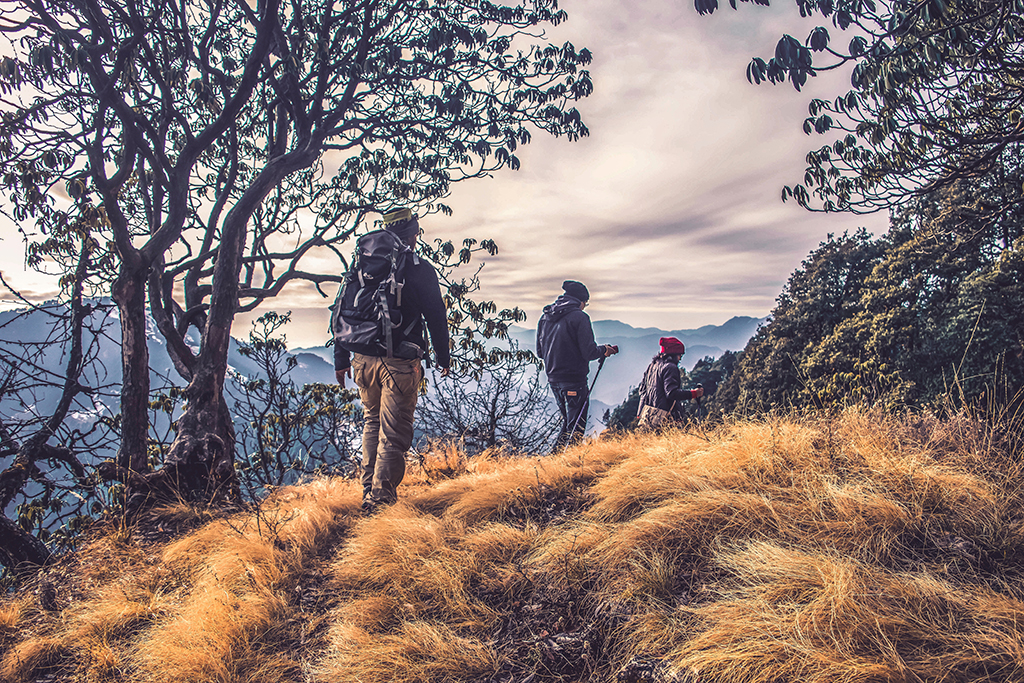Ready to Take a Hike? Join Us in Our Hiking Preparation Series Before Hitting the Trails!
Suffering from NDD (Nature Deficit Disorder)? There’s a simple and exciting cure – Take a Hike! Yes, there is no better way to see and enjoy nature than to immerse yourself in it by hiking. Hiking is a self-propelled and pollution free adventure open to anyone who can walk. Some trails are designed so even those wheelchair-bound can enjoy a ‘rolling hike’ as well. Hiking is a great benefit to the mind as well as the body. We all know walking is the one exercise that can be tailored to anyone’s ability. And, as a cardio work out, it works wonders. The peaceful serenity one can enjoy out away from the hustle and noise of everyday living is almost Zen-like.
Here in Appalachia, to say hiking is popular is like saying LeBron James is a not a bad ballplayer. But, before you head off into the world of hiking, there are a few things you should know.
Planning Ahead Makes for Happy Hiking
If you are a novice hiker read all you can. The internet is filled with information. The obvious place to begin is where you are now.
Locate the trails in your area and plan on a short two hour out and back hike. Make sure you have at least the necessary equipment which we will lay out below.
Check the weather just before starting. Here in the mountains, the weather can change rather quickly so be aware of predicted conditions. If it is your first hike, wait for a sunny day with temperatures in your comfort range.
Equipment Preparation
We’ll start with the most basic suggested items for a short day trip.
- Take more than you think you’ll need. The night before, fill two 1 liter water bottles halfway and freeze them. Fill to the top, and you will have cool water for two to three hours. Hydrate from another source just before the hike. We recommend 1-liter Smartwater bottles ($6). Their slim design fits easily into side pockets on most backpacks.
- A compass. Learn how to use it in your backyard or street first. I know, your phone has GPS, but just in case…
- Fully charged cell phone preferably with a GPS app that allows friends or family to track your movements. Safeguard it in a protective case like the Speck Presidio Sport ($45).
- A small multifunction knife like a Swiss Army Or a Leatherman-style multi-tool.
- Method for starting a fire like Bic lighters or better yet, a flint and striker combo. A pocket full of lint from the dryer makes excellent, easy to ignite fuel. Doesn’t weigh anything either!
- Spare pair of socks. Wet feet lead to blisters and blisters lead to misery on the trail. Darn Tough Hiker Full-Cushion Socks ($22) are perfect and have an incredible lifetime guarantee! You can swap out old worn socks for brand-new ones at any store that sells ‘em!
- A soft brimmed hat like a “boonie hat” with drawstring.
- Polarized sunglasses with lanyard. A polarized lens allows you to see through glare and deeper into the water of streams, ponds, and lakes.
- A good pair of walking shoes if the trail is relatively level and dry. Like Saucony Grid Excursion ($50 Men’s or Women’s). Hiking boots are your best bet for any trail. They offer ankle support and an excellent gripping tread. Do not skimp on the quality. Check out Timberland World Hiker boots ($160)or Keen Men’s Targee II Mid Hikers ($135). Make sure any footwear is thoroughly broken in before the hike.
- There is no need to purchase a large backpack, at least not until you have caught the hiking fever (which is almost guaranteed if you make the first venture an enjoyable one!). One of about 50 liters with side pockets and a separate flapped rear pouch will work for most hikes, even overnighters. When going with a big pack, most people tend to overpack and end up with a heavy pack. This will lessen your enjoyment because it will shift your balance making you change your pace and stride. Also by the time you have hiked for a couple of hours, that extra weight begins to get burdensome.
- A shrill, pea-less metallic whistle. Maybe doesn’t sound (excuse the intentional pun) like a needed hiking accessory, but it can be a lifesaver. If you are ‘bewildered’ and want to attract attention three long and loud bursts may reveal your presence if not your actual location. Also, loud whistles usually cause unwelcome wildlife to turn the other way.
- I think the only way you can improve on a hike is to share it with a friend. The best hiking partner is a person who has a similar personality, is about the same age and physical condition and loves a bit of adventure. If your companion is a dog, keep it on a leash no longer than six feet.
Take a Hike Day is right around the corner on November 17th. You’ll want to be prepared- stay tuned for part two in our hiking series!
Stay up to date with other Appalachian region events and craft shows by following Got Mountain Life on Facebook, Twitter, and Instagram. Be sure to visit our events calendar often!




Trackbacks/Pingbacks